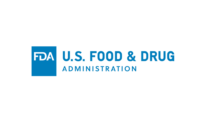The FDA is advising consumers not to eat, and restaurants and food retailers not to sell, and to dispose of, oysters that were harvested between 11/17/2022 and 12/7/2022 from area TX 1, Galveston Bay, Texas, due to possible norovirus contamination. These oysters were sold in Alabama, Florida, Georgia, Louisiana, Mississippi, North Carolina, Tennessee and Texas. It is possible that additional states received these oysters through further distribution. Consumers who purchased oysters after Nov. 17 should check the packaging to see if they were harvested in TX 1. Packaged oysters include harvest area information on the packaging. Contaminated oysters can cause illness if eaten raw, particularly in people with compromised immune systems. Food contaminated with norovirus may look, smell and taste normal. Consumers of these products who are experiencing symptoms of norovirus illness should contact their healthcare provider, who should report their symptoms to their local health department.
Summary of problem and scope
The Texas Department of State Health Services and the Florida Department of Health notified the FDA of illnesses associated with the consumption of raw oysters harvested from TX 1, Galveston Bay, Texas. On Dec. 8, 2022, the Texas Department of State Health Services issued a recall order for all oysters harvested between 11/17/2022 and 12/7/2022 from harvest area TX 1, Galveston Bay, Texas, and informed the Interstate Shellfish Sanitation Conference who subsequently notified the other member states. Other states also initiated recall procedures consistent with the Interstate Shellfish Sanitation Conference agreement. The states are continuing to conduct trace-forward investigations. The FDA is assisting with and coordinating interstate notification efforts as a result of the states’ investigations.
FDA actions
The FDA is issuing this alert advising consumers to not eat, and restaurants and food retailers to not sell, oysters harvested between 11/17/2022 and 12/7/2022 from harvest area TX 1, Galveston Bay, Texas due to possible norovirus contamination. The FDA is awaiting information on further interstate distribution of the oysters and will continue to monitor the investigation and provide assistance to state authorities as needed.
Symptoms of norovirus
People of all ages can get infected and sick with norovirus. The most common symptoms of norovirus are diarrhea, vomiting, nausea and stomach pain. Other symptoms include fever, headache and body ache.
A person usually develops symptoms 12 to 48 hours after being exposed to norovirus. Most people with norovirus illness get better within 1 to 3 days.
If you have norovirus illness, you can feel extremely ill, and vomit or have diarrhea many times a day. This can lead to dehydration, especially in young children, older adults and people with other illnesses. Symptoms of dehydration include decrease in urination, dry mouth and throat and feeling dizzy when standing up. Children who are dehydrated may cry with few or no tears and be unusually sleepy or fussy.
If you think you or someone you are caring for is severely dehydrated, call your healthcare provider.
Recommendations for consumers
Consumers who have symptoms of norovirus should contact their healthcare provider to report their symptoms and receive care. Healthcare providers should report their patient’s symptoms to their local health department.
To report a complaint or adverse event, you can
- Call an FDA Consumer Complaint Coordinator if you wish to speak directly to a person about your problem.
- Complete an electronic Voluntary MedWatch form online.
- Complete a paper Voluntary MedWatch form that can be mailed to FDA.
Visit www.fda.gov/fcic for additional consumer and industry assistance.
Recommendations for restaurants and retailers
Restaurants and retailers should not sell the potentially contaminated oysters. Restaurants and retailers should dispose of any products by throwing them in the garbage or returning them to their distributor for destruction.
Restaurants and retailers should also be aware that the oysters may be a source of pathogens and should control the potential for cross-contamination of food processing equipment and the food processing environment. They should follow the steps below.
- Wash hands with warm water and soap following the cleaning and sanitation process.
- Retailers, restaurants and other food service operators who have processed and packaged any potentially contaminated products need to be concerned about cross-contamination of cutting surfaces and utensils through contact with the potentially contaminated products.
- Retailers that have sold bulk product should clean and sanitize the containers used to hold the product.
- Regular frequent cleaning and sanitizing of food contact surfaces and utensils used in food preparation may help to minimize the likelihood of cross-contamination.
Additional information
- Norovirus | CDC
- The Symptoms of Norovirus | CDC
- Preventing Norovirus | CDC
- Raw Oyster Myths
- Handwashing: A Healthy Habit in the Kitchen | Handwashing | CDC
Source: FDA
.jpg?1723473880)



.jpg?height=200&t=1723473880&width=200)


